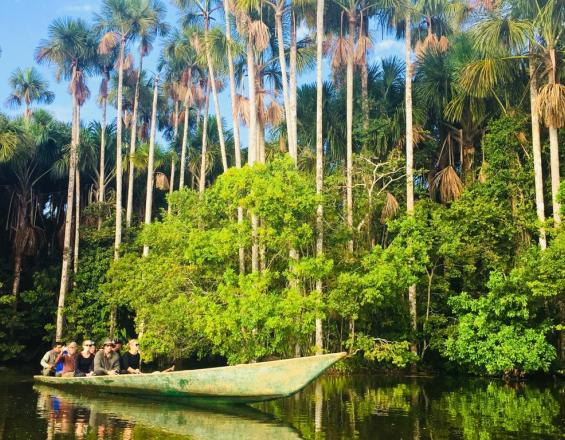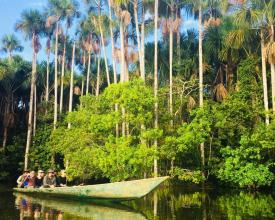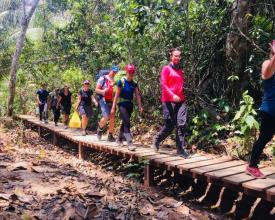
Inclusive tourism in the Peruvian Amazon

Because of its proximity to the city of Puerto Maldonado, its biodiversity and scenic beauty, Tambopata National Reserve (RNTAM) has potential for ecotourism. However, illegal mining is the main threat in the buffer zone (ZA), with invaluable impacts for humanity (deforestation, pollution, and habitat loss).
Because of this and the multiple stakeholders present, the Regional Government of Madre de Dios approved the Action Plan for the Protection of the RNTAM's Buffer Zone. It marks a milestone in the country by demonstrating that it is possible to articulate civil society to make economic activities compatible, contribute to the management of the ANP and promote sustainable development.
In addition, RNTAM promotes nature tourism as a strategy to conserve biodiversity and mitigate threats. This is the case of Sandoval Lake and Cocha Chuncho, where inclusive tourism was chosen with elevated trails that have increased the number of visitors, operators, and benefits to the population.
Impacts
- Articulation of 28 Peruvian government and civil society organizations for the implementation of the Action Plan.
- Liberation of 100% (759 ha) affected by illegal mining and reforestation of 641 ha.
- Leverage of public funds for the recovery of forest ecosystems in the La Pampa sector, one of the most affected by illegal mining.
- First protected natural area to develop activities aimed at inclusive tourism, such as Lago Sandoval and Cocha Chuncho, with access for the elderly and people with reduced mobility or in wheelchairs.
- Safety and ease of access to Sandoval Lake and Cocha Chuncho during the rainy season, reducing risks to visitors and impacts to the environment by avoiding mud and flooded areas.
- Commitment and joint work with tour operators to improve infrastructure, achieving 44 strategic allies.
- In 2022 received recognition as a biosecure tourist destination through the Safe Travel seal and Top 100 Green Destinations Certification by the Ministry of Foreign Trade and Tourism.
- Approximate 50% increase in visitors between 2015 and 2019. 64% of tourists visit Lake Sandoval.
- Income for the local population of Sandoval Lake and Collpa Chuncho with an increase of 60%.

